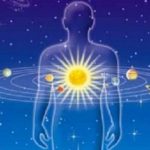by Kimshuk Parikh: Seasonal affective disorder (SAD) is a type of depression that’s related to changes in seasons…
SAD begins and ends at about the same times every year. If you’re like most people with SAD, your symptoms start in the fall and continue into the winter months, sapping your energy and making you feel moody.
Symptoms specific to winter-onset SAD, sometimes called winter depression, may include:
- Tiredness or low energy
- Problems getting along with other people
- Hypersensitivity to rejection
- Heavy, “leaden” feeling in the arms or legs
- Oversleeping
- Appetite changes, especially a craving for foods high in carbohydrates
- Weight gain
The specific cause of seasonal affective disorder remains unknown. Some factors that may come into play include:
- Your biological clock (circadian rhythm). The reduced level of sunlight in fall and winter may cause winter-onset SAD. This decrease in sunlight may disrupt your body’s internal clock and lead to feelings of depression.
- Serotonin levels. A drop in serotonin, a brain chemical (neurotransmitter) that affects mood, might play a role in SAD. Reduced sunlight can cause a drop in serotonin that may trigger depression.
- Melatonin levels. The change in season can disrupt the balance of the body’s level of melatonin, which plays a role in sleep patterns and mood.
Understanding SAD through Ayurveda
Every season is associated with a dosha in Ayurveda — spring season with Kapha Dosha, summer season with Pitta Dosha and winter with Vata Dosha. Each of these doshas has a tendency to increase within the physiology during its season. Thus, the heat of summer tends to aggravate the Pitta in us, while a dry, cold and windy winter tends to increase Vata.
These seasonal fluctuations of the doshas within us can be balanced by eating properly for the season. Desh (place) and kala (time) are important considerations in choosing what you eat as per Ayurveda. If you reflect, some of these choices come naturally to most of us — we like cool beverages on a sunny day and love to wrap our fingers around a hot mug of soup on a cold evening.
Vata dosha is composed of the air and space elements, and it governs all movement in the body. Vata is the dominant seasonal dosha from mid-October to mid-February. Even for those with less Vata in our bodily constitution, it is important to take steps to keep Vata in balance during this time because of its seasonal influence.
Signs of an aggravated Vata include an irregular digestion, gas, constipation, intestinal cramps, poor assimilation and fatigue.
We can easily correlate these symptoms with SAD.
Eating to balance Vata dosha
“Warm” and “cooked” are key factors in the Vata-pacifying diet. Nourishing soups and stews, hot cereals, hearty grains, wholesome beverages and heavy desserts like rich rice pudding all feel welcome on cold winter days.
To keep Vata in its proper state, enjoy sweet, sour and salty tastes and avoid bitter, pungent and astringent foods. All dairy products, for example, pacify Vata. Always boil milk before you drink it, and drink it warm, with a pinch of cardamom or dry ginger in it.
Favor sweet, sour, heavy fruits, such as oranges, bananas, avocados, grapes, cherries, peaches, melons, berries, plums, pineapples, mangos and papayas. Vegetables should be eaten cooked; reduce raw salads. Beets, carrots, asparagus and sweet potatoes are good choices. In moderate quantities, the following vegetables are also fine, especially if they are cooked with ghee or oil and Vata-reducing spices: peas, green leafy vegetables like broccoli, cauliflower, celery, zucchini and potatoes.
Vata-pacifying spices include cardamom, cumin, ginger, cinnamon, salt, cloves, mustard seed and black pepper in moderation. Ayurveda advises cooking with it rather than sprinkling it on prepared foods as the preferred way of assimilating the benefits of the spices.
Lifestyle changes
Massage therapy
Virtually every symptom listed by the American Psychological Association can benefit from massage. Research has shown that massage can lower your heart rate and blood pressure, relax your muscles and increase the production of endorphins, your body’s natural “feel good” chemical. Serotonin and dopamine are also released through massage, and the result is a feeling of calm relaxation that makes chronic or habitual as well as acute or short-term stress much easier to overcome.
“The body of one who uses oil massage regularly does not become affected much even if subjected to accidental injuries, or strenuous work. By using oil massage daily, a person is endowed with pleasant touch, trimmed body parts and becomes strong, charming and least affected by old age.”
Benefits of Abhyanga (massage)
- Improves sleep patterns
- Softens skin
- Strengthens the body’s tolerance
- Imparts a firmness to the limbs
- Imparts tone and vigor to the dhatus (tissues) of the body
- Stimulates the internal organs of the body, increasing circulation
- Pacifies vata and pitta
Meditation
Meditation increases grey matter concentration in the brain.
A group of Harvard neuroscientists ran an experiment where 16 people were submitted to an eight-week mindfulness course, using guided meditations and integration of mindfulness into everyday activities. The results were reported by Sara Lazar, PhD. At the end of the study, MRI scans show that the grey matter concentration increases in areas of the brain involved in learning and memory, regulating emotions, sense of self and having perspective.
Additional Steps To Take
In addition to your treatment plan for seasonal affective disorder, try the following:
Make your environment sunnier and brighter. Open blinds, trim tree branches that block sunlight or add skylights to your home. Sit closer to bright windows while at home or in the office.
Go outside. Take a long walk, eat lunch at a nearby park or simply sit on a bench and soak up the sun. Even on cold or cloudy days, outdoor light can help — especially if you spend some time outside within two hours of getting up in the morning.
Exercise regularly. Exercise and other types of physical activity help relieve stress and anxiety, both of which can increase SAD symptoms. Being more fit can make you feel better about yourself too, which can lift your mood.

































































